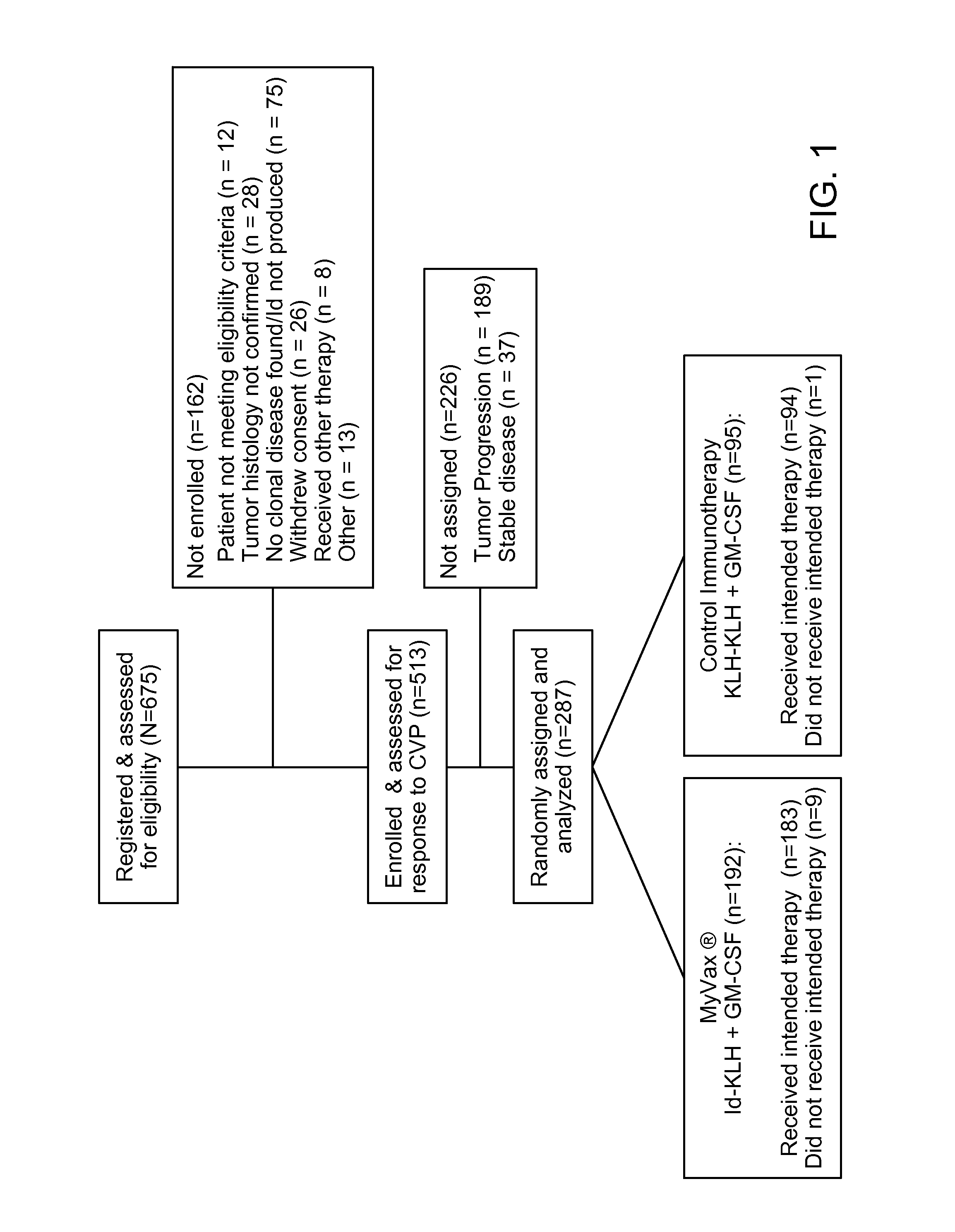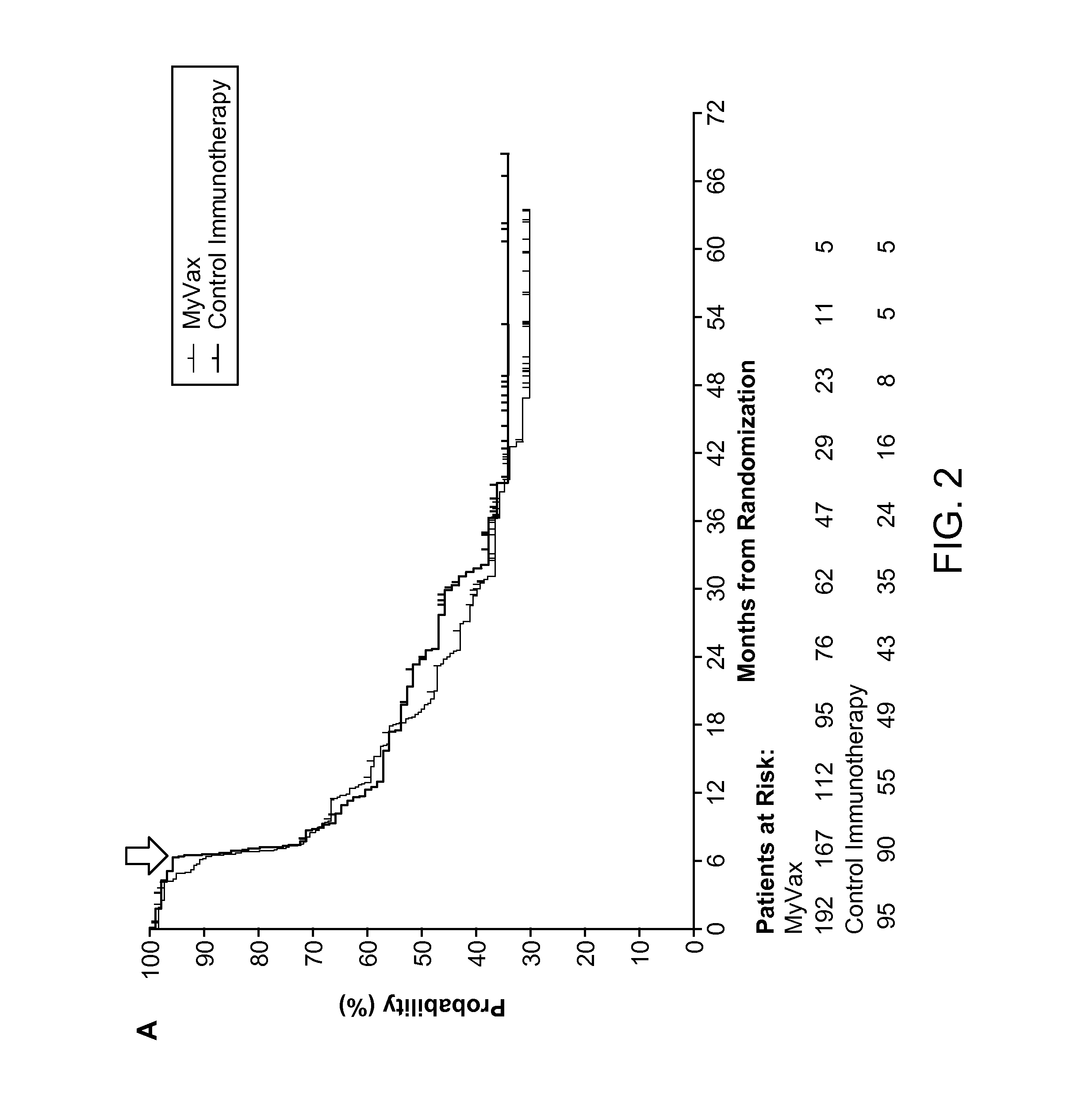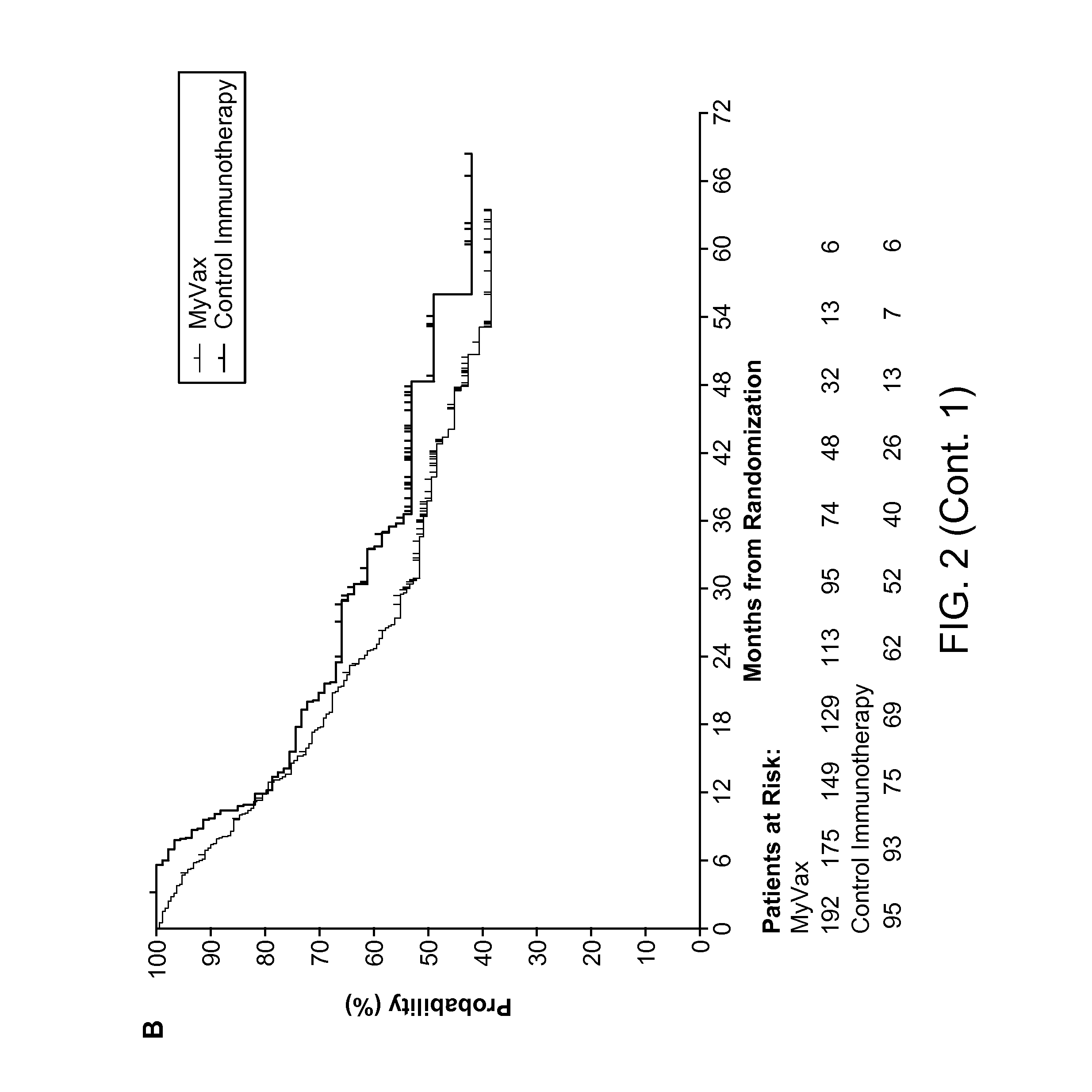Method of Predicting Responsiveness of B Cell Lineage Malignancies to Active Immunotherapy
a technology of immunotherapy and b cell lineage, applied in the field of predicting the responsiveness of b cell lineage malignancies to active immunotherapy, can solve problems such as the tendency to adverse outcomes
- Summary
- Abstract
- Description
- Claims
- Application Information
AI Technical Summary
Benefits of technology
Problems solved by technology
Method used
Image
Examples
example 1
[0086]The following examples are provided in order to demonstrate and further illustrate certain preferred embodiments and aspects of the present invention and are not to be construed as limiting the scope thereof.
[0087]In the experimental disclosure which follows, the following abbreviations apply: M (molar); mM (millimolar); nM (nanomolar); pM (picomolar); mg (milligrams); μg (micrograms); pg (picograms); ml (milliliters); μl (microliters); ° C. (degrees Celsius); OD (optical density); nm (nanometer); BSA (bovine serum albumin); and PBS (phosphate-buffered saline solution).
[0088]Patients with advanced follicular lymphomas (FL) are incurable with currently available therapies. Nevertheless, survival of these patients has improved in the past decade with the introduction of rituximab immunotherapy. As with rituximab, immunological targeting of the unique portions of their tumor surface immunoglobulins, or idiotype (Id), can be achieved by infusion of patient specific monoclonal anti...
example 2
[0111]Patient groups were analyzed for features that distinguish between responder and on-responder groups as described above. Non-significant differences were attributed to Ig heavy chain isotype (IgM, G, A); Ig light chain isotype (Igκ, Igλ); IgH V-gene repertoire (VH family); IgH J-gene repertoire (JH family); somatic mutation frequency; antigen selection inference; Hep2 Reactivity and pattern. Significant differences were found in the CDR3 length, and in the H1 / L1 tyrosine frequency.
[0112]Amino acids were enumerated across the seven topographically constrained regions in each patient's idiotypic sequence; considering the tumor's unique immunoglobulin heavy and light chain genes. These regions are termed Framework regions 1 through 4 [FR1 / 2 / 3 / 4], and Complementarity Determining Regions 1 through 3 [CDR1 / 2 / 3]. It was determined whether any sequence features were differentially distributed among patients mounting immune responses (Id-R) or failing to mount them (Id-NR). The tyrosin...
PUM
| Property | Measurement | Unit |
|---|---|---|
| pH | aaaaa | aaaaa |
| temperature | aaaaa | aaaaa |
| frequency | aaaaa | aaaaa |
Abstract
Description
Claims
Application Information
 Login to View More
Login to View More - R&D
- Intellectual Property
- Life Sciences
- Materials
- Tech Scout
- Unparalleled Data Quality
- Higher Quality Content
- 60% Fewer Hallucinations
Browse by: Latest US Patents, China's latest patents, Technical Efficacy Thesaurus, Application Domain, Technology Topic, Popular Technical Reports.
© 2025 PatSnap. All rights reserved.Legal|Privacy policy|Modern Slavery Act Transparency Statement|Sitemap|About US| Contact US: help@patsnap.com



